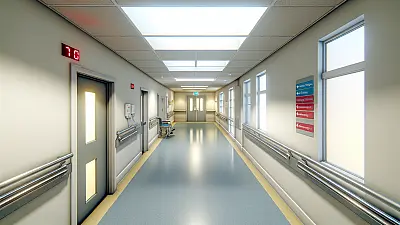MARSHALLTOWN, IA - State inspectors found that Southridge Specialty Care failed to adequately document and investigate bruising on a resident's legs and knees, raising concerns about the facility's injury reporting protocols and staff communication procedures.

Documentation Failures Put Residents at Risk
The May 29, 2025 inspection revealed significant gaps in how nursing staff documented and communicated about resident injuries at Southridge Specialty Care. Inspectors discovered that bruises on Resident #8's legs and knees were not properly documented in the medical record, despite being photographically documented during the survey.
When confronted with photographic evidence of the bruising, the facility's Nurse Consultant acknowledged she could not locate any documentation of the injuries in the resident's medical record. This discovery highlighted a critical breakdown in the facility's injury documentation system that could compromise resident safety and quality of care.
The inspection revealed that Certified Nursing Aides (CNAs) had marked "no new skin issues" on skin observation forms for dates including March 3, March 10, and March 17, 2025, despite the presence of visible bruising. This misreporting occurred because CNAs incorrectly assumed that nurses had already assessed the resident's skin condition following a fall incident.
Critical Communication Breakdown Between Staff
The facility's Nurse Consultant explained that a fundamental misunderstanding among CNAs led to the documentation failure. Staff believed that because nurses had assessed residents after falls, they were already aware of any skin issues, according to the inspection report. However, this assumption proved problematic because bruising may not appear immediately after an incident.
The Nurse Consultant acknowledged that "after a fall, bruising may not show up right away, therefore the nurse would not see an area during their initial assessment." This timing issue means that CNAs conducting subsequent skin checks play a crucial role in identifying delayed bruising that could indicate injury severity or complications.
The facility had implemented a skin observation tool designed to alert nurses when CNAs identified new skin concerns. However, the system failed because staff misunderstood when and how to use it properly, creating dangerous gaps in resident monitoring.
Medical Significance of Proper Injury Documentation
Accurate documentation of bruising and skin injuries serves multiple critical medical purposes in long-term care settings. Bruising patterns can indicate the severity of falls, potential underlying medical conditions, or medication side effects that require clinical attention. Without proper documentation, healthcare providers cannot track healing progress, identify recurring injury patterns, or adjust care plans appropriately.
Delayed bruising is particularly significant in elderly residents who may be taking anticoagulant medications or have conditions affecting blood clotting. What appears as minor bruising could indicate more serious internal injuries or bleeding complications that require medical intervention. Proper assessment within 24-48 hours of any incident is considered standard medical practice to ensure comprehensive evaluation.
The documentation failures also compromise the facility's ability to conduct thorough incident investigations, identify environmental hazards, or implement preventive measures to protect other residents from similar injuries.
Facility's Own Policies Require Comprehensive Documentation
Southridge Specialty Care's own policies, established in their Skin Tears Abrasions and Minor Breaks policy revised in September 2013, clearly outline required documentation procedures. The policy mandates several critical steps that were not followed in this case, including:
- Obtaining physician orders and documenting physician notification in the medical record - Completing an in-house investigation of causation for any skin injuries - Generating appropriate incident forms and documenting family notification - Filing a Report of Incident/Accident when abrasions, skin tears, or bruises are discovered
The policy specifically requires documentation of how residents tolerate treatments, any complications such as pain or swelling, and interventions implemented to prevent additional injuries. None of these required steps were properly completed for the documented bruising incident.
Industry Standards Demand Systematic Injury Tracking
Standard nursing home protocols require comprehensive skin assessments during regular care activities, with any new findings immediately reported to licensed nursing staff. Federal regulations mandate that facilities maintain accurate medical records and conduct thorough investigations of any incidents that could affect resident health and safety.
Best practices in long-term care emphasize the importance of systematic skin monitoring, particularly for residents at high risk of falls or those taking medications that affect bleeding. Facilities must establish clear communication channels between all staff levels to ensure that observations made by CNAs reach appropriate clinical decision-makers promptly.
Additional Issues Identified
The inspection also revealed concerns about staff training and understanding of documentation procedures. The facility's Nurse Consultant acknowledged that education would be provided to address the misunderstandings that led to the documentation failures.
The incident highlights broader systemic issues including inadequate staff training on the timing of injury documentation, insufficient oversight of CNA reporting practices, and gaps in the facility's quality assurance processes for incident documentation.
For complete details about this inspection and the facility's response, readers should review the full Centers for Medicare & Medicaid Services survey report, which provides comprehensive information about all findings and the facility's planned corrective actions.
Full Inspection Report
The details above represent a summary of key findings. View the complete inspection report for Southridge Specialty Care from 2025-05-29 including all violations, facility responses, and corrective action plans.
💬 Join the Discussion
Comments are moderated. Please keep discussions respectful and relevant to nursing home care quality.